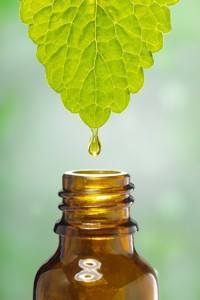Important Definitions Concerning Aromatic Products 10 years ago
For those new to the world of essential oils and aromatherapy here a few important definitions that will hopefully clear up confusion for some of you.
Essential Oil
Essential oils are the volatile, aromatic molecules obtained by steam or hydrodistillation of botanicals. Most essential oils are primarily composed of terpenes and their oxygenated derivatives. Different parts of the plants can be used to obtain essential oils, including the flowers, leaves, seeds, roots, stems, bark, wood, etc.
Essential oils are not really "oils" in the chemical sense of the word. The term is coined going back to the Alchemy days when basically anything that did not dissolve in water was called an oil. The alchemists believed in four basic elements Earth, Air, Fire and Water. In their search for the "elixir of life" they made many chemical discoveries and when distillation was discovered it was believed to be a process of purification and concentration of spiritual forces into the missing element, the "Quintessential" or 5th element. Alchemists distilled everything looking for the 5th element and upon distilling aromatic plants they found substances which floated on water (to them an oil) which they called the "Quintessence." In these "Essential Oils" they thought they had found the missing 5th element.
Cold-pressed citrus oils are the only exception to the distillation rule for EOs. While the pressed oils from various citrus peels are also considered to be essential oils, these are not to be confused with cold-pressed fixed or carrier oils such as olive, grapeseed, coconut etc. which are non-volatile oils composed mainly of fatty acid triglycerides. Citrus oils are the ONLY exceptions the the "EO Rule" of having to be steam distilled in order to be termed an essential oil. This is primarily because citrus oils are still mainly composed of volatile molecules. They are the only pressed oils that are still essentially (no pun intended) entirely volatile, unlike other pressed oils which contain large amounts of non-volatile molecules in them. While it may seem inconsistent to carve out this exception for citrus only to be the only non-distilled product to still be called an essential oil, this is just how the industry has historically grown up and accepted this way so we just have to deal with it and accept it to because its most likely never going to change.
It's important to note that essential oils are NEVER solvent extracted and its always incorrect to refer to an extracted product as an essential oil. Extraction, in chemistry terms, means that a solvent was used. Distillation is a fundamentally different process than extraction. This is why one of the first things I teach my students is to NEVER say that essential oils are EXTRACTED by steam distillation. Anyone caught saying this will be promptly ejected from the EOU (just kidding, but it is one of my pet peeves). The proper way to express this is to say that essential oils are OBTAINED by steam distillation.
Absolutes
Absolutes are solvent extracted products. They produced by a multi-step process which involves first extracting the flower (or other biomass) with a non-polar solvent such as hexane. After the hexane is evaporated a waxy product is obtained called the CONCRETE. The concrete is then extracted using a polar solvent such as ethanol. The polarity of ethanol will allow extraction of the more polar and volatile aromatics from the concrete while leaving behind the non-polar plant waxes which don’t dissolve well in ethanol. Finally, the ethanol is evaporated to leave behind the absolute which will typically have 1-5% ethanol remaining in it and sometimes a trace of hexane, depending on the method used.
CO2s or Carbon Dioxide Extracts
CO2 extracts, like absolutes, are solvent extracted products. The key difference is that the solvent in this case is simply CO2 or Carbon Dioxide (that’s right, the same stuff you exhale with every breath!). Obviously, carbon dioxide is a gas under normal atmospheric conditions, but under certain conditions of low temperature and high pressure we can actually force Carbon Dioxide to become a liquid. In the liquid phase CO2 happens to be a good solvent for extracting out the aromatic molecules from plants. Once the desired extraction is complete, you simply bring the extraction vessel to normal atmospheric conditions and the CO2 rapidly converts back to a gas and dissipates, leaving behind a very high quality aromatic product that is the true, unchanged essence of the plant and completely free of solvent. CO2 Selects - obtained at lower pressures and more closely compare to the volatility of essential oils since the less of the heavier waxy materials are extracted. CO2 Totals - Obtained at higher pressures to get out the volatiles along with the heavier molecules and plant waxes that would not be seen in essential oils. The CO2 Totals are many times solid or semi-solid in appearance.

